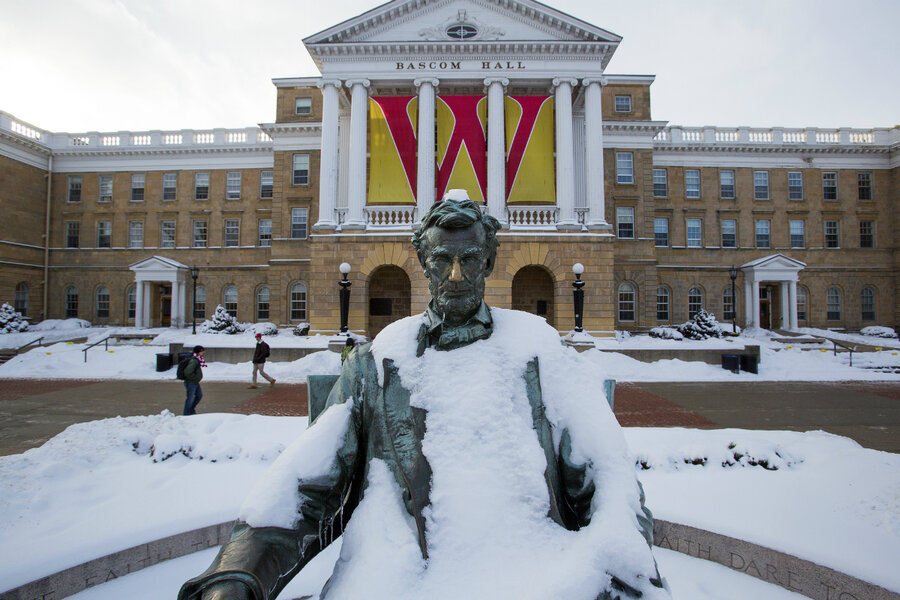UW-Madison announces plan to address history of racism
Loading...
| Madison, Wis.
University of Wisconsin-Madison Chancellor Rebecca Blank announced a multi-pronged effort Thursday to acknowledge the history of racism on campus, but she put aside a decision on whether the names of students with ties to the Ku Klux Klan a century ago should be removed from campus facilities.
Under Ms. Blank's plan, the school would honor people who fought prejudice on campus by presenting their stories in a public exhibit in the Memorial Union. It would also hire four new ethnic studies faculty members over the next year, recruit faculty from underrepresented groups, and increase access for first-generation and low-income students.
The chancellor said she wasn't sure what the exhibit will cost but estimates the four new faculty members would cost about $360,000 annually. The school is already spending $3 million on improving accessibility, she said.
The plan enacts recommendations from a study group Blank formed in August after three people died in a white supremacist rally in Charlottesville, Va. Blank asked the group to review the history of the Ku Klux Klan on campus, saying it was time to fully understand the organization's influence on the school.
The panel released a report Thursday that found two student groups used the name Ku Klux Klan between 1919 and 1926.
The first group wasn't affiliated with the national Ku Klux Klan. It included class presidents, members of student government, members of the yearbook board, and nearly all varsity sport squads.
The study panel wasn't able to find much information on its activities, although it did uncover evidence the group took part in a 1921 campaign against liquor sellers in a Madison neighborhood that resulted in federal officers arresting eight Italian merchants in one night.
The second group was a direct product of the Knights of the Ku Klux Klan, the racist anti-immigrant group that committed violent acts in many parts of the country. The UW group was made up mostly of engineering and agriculture students from Madison and rural Wisconsin towns.
Stephen Kantrowitz, a UW-Madison history professor who co-chaired the study group, said in a conference call with reporters that the panel didn't find anything to suggest that either group participated in intimidation or violence.
Racism and prejudice were an unconscious part of campus life, however, according to the report. Blacks were excluded from campus organizations. Non-Jewish fraternities held dances off-campus to avoid dancing with Jews at the Memorial Union, where exclusion wasn't permitted. No American Indians earned a degree until 1946.
The study group noted that some campus facilities bear the names of members of the first Klan group. Porter Butts and Fredric March, for example, are prominently displayed in the Memorial Union.
The panel didn't recommend whether the names should be removed or not, writing instead that the university should first confront its history.
Blank wrote in a blog post that removing names is complicated because many of the group's members made significant contributions. Mr. Butts, for example, became the Memorial Union's first director and refused to exclude any groups from the building. Mr. March became an actor and fought the persecution of Hollywood artists, many of them Jewish, during McCarthyism in the 1950s.
Blank said in a conference call with reporters that she's not going to ignore the renaming discussion but "the first steps are dealing with some of the history and moving forward."
Madison Mayor Paul Soglin ordered the city to remove a Confederate plaque in a public cemetery in August after the Charlottesville protest. The City Council voted this month to remove a second monument in the cemetery that names 140 Confederate soldiers buried there.
This article was reported by The Associated Press.







